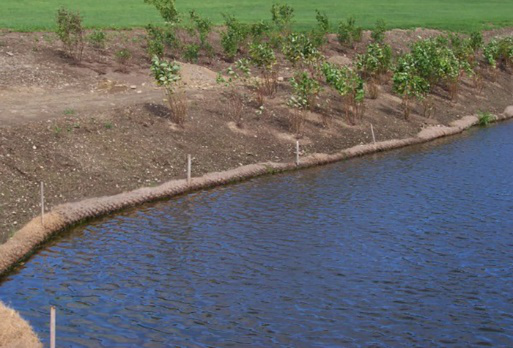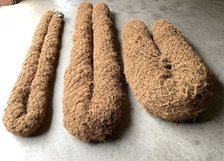
Erosion is a common headache for homeowners and gardeners who live on hilly or sloped land. Whether you’re dealing with a steep backyard hill or want to prevent runoff near your garden beds, BioD-Watl coir sediment control wattles offer a simple and natural solution for effective sediment control. This guide will walk you through everything you need to know about using coir wattles to stop soil loss, protect your landscape, and improve water quality—all without using synthetic materials.
Why Use Coir Wattles for Erosion Control?
Coir sediment control wattles—like Rolanka’s BioD-Watl—are made from 100% natural bristle coir fiber outer net packed with cleaned mattress coir fiber, a tough and biodegradable material extracted from coconut husks. These wattles act as small, flexible barriers that slow down water runoff and trap sediment, making them ideal for:
- Controlling erosion on slopes
- Reducing sediment in stormwater runoff
- Stabilizing disturbed soil in landscaping or construction areas
- Supporting wetland restoration and channel restoration products
Unlike synthetic options, coir wattles decompose over time, enriching the soil instead of polluting it. Studies show that coir materials are highly effective—coconut fiber wattles reduce runoff in sloped landscapes.
What You’ll Need
Before you begin, gather the following items:
- BioD-Watl coir sediment control wattles (length and number depend on slope size)
- Wooden stakes or biodegradable pegs
- A mallet or hammer
- Shovel or trenching tool
- Landscape staples (optional)
Pro Tip: If you’re planting near your wattles, consider pairing them with BioD-Weedmat natural weed control mat or BioD-Medium coir potting soil for better vegetation growth.

How to Install the Wattle
1. Assess the Slope
Start by identifying the slope direction and measuring the dimensions of the area you want to stabilize. Use this to estimate how many wattles you’ll need.
2. Prepare the Ground
Dig a shallow trench—just 2–3 inches deep—along the contour of the slope where you’ll place each wattle. This helps keep them in place and improves sediment control.
3. Place the Wattles
Lay the BioD-Watl coir wattles snugly into the trench. Butt ends tightly together to avoid gaps where water can sneak through.
4. Stake Them Securely
Drive a wooden stake through each end and every 4–5 feet along the length of the wattle. Make sure they’re secure but not crushing the coir material.
5. Backfill and Plant
Pack soil lightly against the upslope side of the wattle. For revegetation projects, use BioD-Pillow coir revegetation pillow or BioD-Mat woven bristle coir blanket to support root growth.
Maintenance Tips
- Inspect wattles after heavy rainfall to ensure they’re intact.
- Re-secure any loose areas with additional stakes.
- Replace or compost wattles once they fully degrade (usually after 2–3 years).
Why Choose Rolanka’s BioD-Watl?
Rolanka International, Inc. is a leader in high-quality soil bioengineering products. Their BioD-Watl coir wattles are part of a full range of eco-friendly erosion solutions. However, Rolanka doesn’t just sell natural erosion products—they offer free technical assistance, maintain a large inventory, and proudly stand apart from big synthetic suppliers who cut corners.
Want to Stop Slope Erosion Naturally?
Don’t wait until the next big storm washes away your soil. Contact them to learn more about their powerful lineup of coir wattles, coir erosion control blankets, soil sediment control products, and other high-performance soil bioengineering products. Whether you’re a homeowner, gardener, or design engineer, Rolanka helps you do it right the first time and save the environment with sustainable, U.S.-invented products like BioD-Roll densely packed coir logs, BioD-Block fabric attached coir block system, coir hop twine, and coir pith soilless potting soil.
Let nature restore itself—with a little help from Rolanka. Contact them today!
